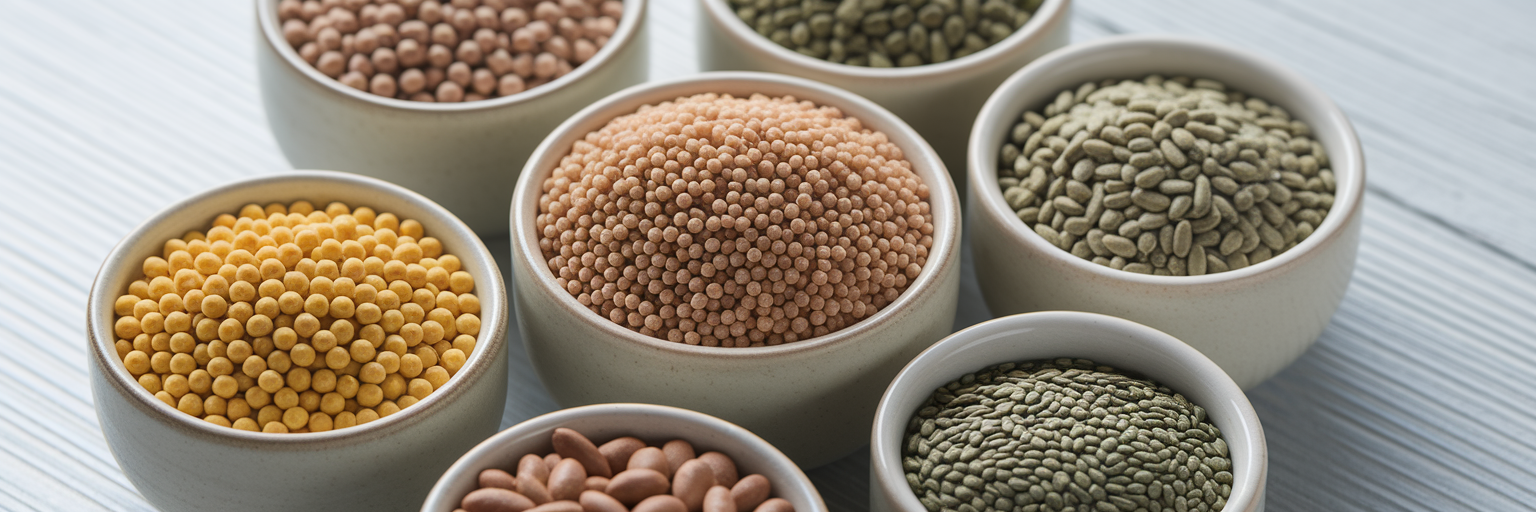Starting Your Journey to Digestive Wellness
We’ve all been there. You finish a great workout, mix up a protein shake, and an hour later, that satisfying feeling is replaced by uncomfortable bloating and gas. It’s a common frustration, and it’s easy to think the problem is you. But it’s not. Finding a protein powder that disagrees with your stomach is an incredibly shared experience, not a personal failure.
This guide is here to change that. We want to give you the confidence to walk down the supplement aisle, pick up a product, and know exactly what you’re looking for. Finding the right vegan protein for a sensitive stomach isn’t about luck; it’s about understanding what’s inside the tub.
By learning to spot a few key ingredients and knowing how to test a new powder, you can find a protein that supports both your fitness goals and your digestive peace. Let’s get you back to feeling good, inside and out.
Understanding Why Some Protein Powders Cause Discomfort

It’s completely normal for certain protein powders to cause digestive upset. For years, many people assumed whey protein was the main culprit because of its lactose content, which is a well-known irritant for a large portion of the population. This led many to switch to plant-based options, only to find that the bloating and discomfort sometimes followed them.
So, what’s going on? The issue often lies not with the protein itself, but with the extra ingredients added for flavor, texture, and shelf life. Think of your gut as a delicate ecosystem. Certain substances can disrupt its balance.
Common offenders include:
- Artificial Sweeteners & Sugar Alcohols: Ingredients like sorbitol, xylitol, and sucralose are not easily absorbed by our bodies. They travel to the large intestine, where gut bacteria ferment them, producing gas that leads to that familiar bloated feeling.
- High-FODMAP Ingredients: This is a category of fermentable carbs that can be tough on sensitive systems. Additives like inulin and chicory root fiber are high in FODMAPs and are a frequent cause of digestive distress. Finding a protein powder without bloating often means avoiding these specific fibers.
Essentially, your body is reacting to ingredients it struggles to break down. The good news is that once you know what to look for, you can easily avoid them.
Gentle Vegan Protein Sources to Look For
Now that we’ve covered the troublemakers, let’s focus on the solutions. When it comes to finding an easy to digest protein powder, the philosophy is simple: less is more. A short, clean ingredient list is your best friend. Look for powders that use single, high-quality protein sources.
Here are some of the gentlest and most effective options on the market:
- Organic Pea Protein: This is a fantastic starting point. It’s naturally hypoallergenic, meaning it’s free from common allergens like dairy, soy, and gluten. Plus, it has a smooth texture and a neutral taste.
- Brown Rice Protein: Another gentle giant, brown rice protein is known for being easy on the stomach. When combined with pea protein, it creates a complete amino acid profile, giving you all the building blocks your muscles need.
- Hemp Protein: Hemp is a powerhouse of nutrition. In addition to protein, it offers a healthy dose of fiber and omega-3 fatty acids, which can contribute to overall gut health.
Beyond the protein source, some powders include beneficial extras. Digestive enzymes like protease and amylase can help your body break down proteins and carbs more efficiently, easing the digestive load. Probiotics are another great addition, as they support the healthy bacteria in your gut. When you find a product with these thoughtful ingredients, you’ve likely found one of the best plant based protein powder options for sensitive individuals. For those who want to compare these options against others, some guides cover the best protein powders available in more detail.
Problematic Ingredients to Avoid on Labels

Becoming a savvy shopper starts with knowing what to leave on the shelf. When you’re scanning labels, think of it as a screening process. Your goal is to spot the red flags before they end up in your shaker bottle. The key is to look for specific ingredients to avoid in protein powders that are known to cause trouble.
Be particularly wary of high-FODMAP additives. As registered dietitian Renee Clerkin highlights in her guide on this topic, ingredients like inulin and chicory root fiber are major triggers for people with digestive sensitivities. Thickeners and gums, such as xanthan gum and guar gum, are another category to watch. While not inherently bad, they can cause a heavy, bloated feeling for some. Finally, always double-check for hidden allergens like soy, corn, or gluten, especially if you have known sensitivities.
This table gives you a quick reference for what to look out for:
| Ingredient Category | Why It Can Cause Issues | Common Names on Labels |
|---|---|---|
| Artificial Sweeteners | Poorly absorbed by the small intestine, leading to fermentation and gas. | Sucralose, Aspartame, Acesulfame Potassium |
| Sugar Alcohols | Can have a laxative effect and cause bloating and cramping. | Sorbitol, Maltitol, Xylitol, Erythritol |
| Gums & Thickeners | Can be hard to digest for some, causing a heavy or bloated feeling. | Xanthan Gum, Guar Gum, Carrageenan |
| High-FODMAP Fibers | These are fermentable carbs that can trigger significant GI symptoms in sensitive people. | Inulin, Chicory Root Fiber, Fructo-oligosaccharides (FOS) |
Note: This table highlights common triggers for sensitive stomachs. Individual tolerance can vary, so it's important to listen to your own body.
How to Read a Protein Powder Label Like a Pro
Understanding a protein powder label shouldn’t feel like deciphering a secret code. With a simple method, you can quickly assess whether a product is right for you. Here is how to choose protein powder by focusing on what truly matters.
- Start with the Ingredient List: Before you even look at the protein grams or calorie count, flip the tub around to the ingredient list. This is where the most important information for your gut is hiding. A short, recognizable list is always a great sign.
- Check the Order: Ingredients are listed by weight, from most to least. The very first ingredient should be the protein source itself, like "Organic Pea Protein." If sugar or an unpronounceable chemical is at the top, it’s best to put it back.
- Spot Hidden Irritants: Get curious about what you’re reading. If you see an ingredient you don't recognize, it’s worth a quick search. Many companies that value transparency will provide detailed answers about their ingredients on their FAQs page.
- Look for Quality Seals: Certifications from third parties are a great indicator of a clean product. Seals like USDA Organic and Non-GMO Project Verified show that the company has gone the extra mile to ensure the purity of its ingredients.
Testing a New Protein Powder for Tolerance

Once you’ve chosen a promising new protein powder, the final step is to introduce it to your system carefully. Think of this as a patch test for your gut. This methodical approach helps you confirm that the powder works for your body without risking a full-blown digestive revolt.
- Start Small: Don't go for a full scoop on day one. Begin with a half or even a quarter of a serving. This gives your body a chance to adjust and lets you gauge its reaction without overwhelming your system.
- Keep It Simple: For your first test, mix the powder with only water. Adding milk, fruit, or other ingredients can make it difficult to tell if a reaction is from the powder or something else.
- Pay Attention: After your shake, mindfully observe how you feel for the next few hours. Notice any subtle signs of bloating, gas, or discomfort. This isn’t about judgment; it’s just about gathering information.
- Increase Gradually: If the small serving goes well, try a slightly larger amount the next day. Continue to increase the serving size slowly over several days until you reach a full scoop.
A clean, minimal-ingredient formula like our Chocolate Vegan Protein is a great place to start this process. Once you’ve confirmed it agrees with you, you can start getting creative with some easy vegan protein recipes.
Embracing Your Path to Better Digestion
Finding the right vegan protein for a sensitive stomach is a personal journey, not a one-size-fits-all prescription. The goal is to feel empowered, not overwhelmed. By focusing on simple, whole-food ingredients, reading labels with confidence, and testing new products slowly, you put yourself in control of your digestive health.
Remember the key takeaways: prioritize clean protein sources like pea and rice, steer clear of artificial additives and high-FODMAP fibers, and always listen to your body. It’s the most reliable guide you have.
If this guide was helpful, feel free to share it with a friend who might be on a similar journey. And when you’re ready to find a protein that feels as good as it tastes, we invite you to explore all our products, designed with your well-being in mind.



